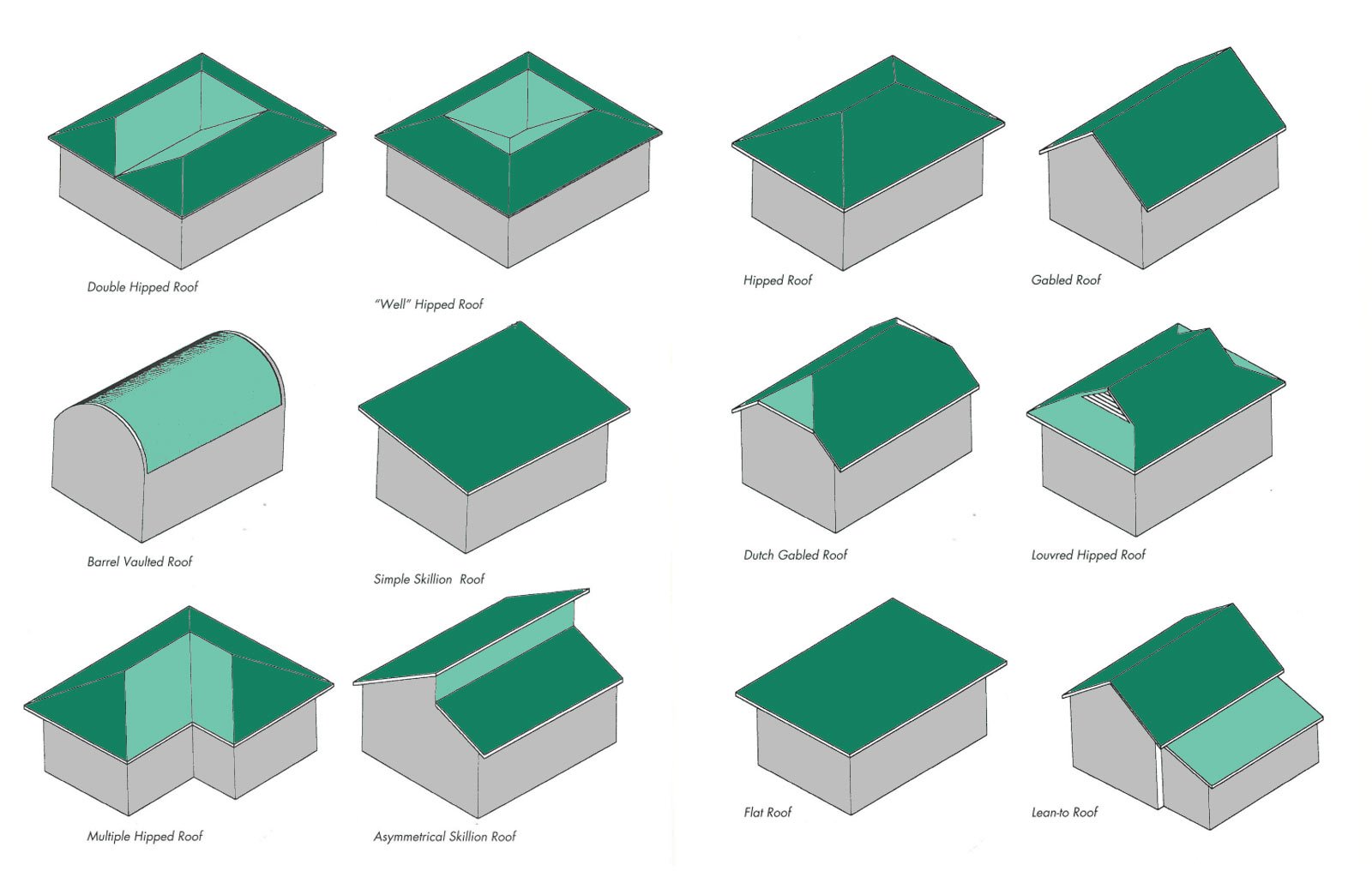Roof Types, Shapes and Materials
As you envision and plan your dream home, have you thought about what roofing style and materials will work well?
The team at Pivot Homes have you covered, with expert tips and insights on all things roofing.
Most Common Roof Shapes
Roofs come in all sorts of shapes. Your options are only limited by your imagination, and you really don’t have to conform to the existing categories.
Here are some of the main categories of roof shapes and what they have to offer you. We’ve listed the pros and cons of each roof type, but keep in mind that a professional home builder should be able to compensate for any drawbacks and help you choose the best roof type for your particular situation.
1. Flat Roofs
Flat roofs have a 5 degree fall for water runoff. They normally use some sort of parapet as part of their design. This design is common with commercial buildings and you will find it on most modern skyscrapers. However, it can also be used on residential builds, and is common in a subset of the rustic Italian villa designs as well as modern architectural styles.
Pros
Unique.
Offers rooftop space for things like gardens and terraces.
Can act as extra storage for things like A/C units and water heaters.
Cheaper to set up and maintain.
Cons
Can require a box gutter in order to drain efficiently.
Not the most energy efficient due to limited insulation space.
2. Skillion Roofs
These roofs are designed slanted on one side, with one side wall taller than the other. It’s a relatively popular style all over the world and works well with both traditional and modern home styles. You can also have multiple skillion roofs for a tiered or layered effect which is very unique.
Pros
Easy to install.
Cheaper, as fewer materials are required.
Offers the best drainage especially in rainy locations.
Cons
Steep pitches reduce the amount of ceiling space indoors.
3. Gabled Roof & Hip Roof
This is the most popular roofing shape in the entire world. It features two slanted pitches meeting at a central point at the tip of the roof. It’s another very versatile shape that works with most architectural styles. This shape of roof also comes in different variations.
Pros
Provides excellent drainage.
Allows ample space for an attic or vaulted ceiling.
The simple design makes them affordable and easy to install.
Cons
Not unique - are seen everywhere.
4. Butterfly roof
This is one of the most unique and modern roof shapes. It can be compared to the gabled roof in that it features two slated pitches. However, the butterfly roof is unique in that the point at which the panels meet is inverted giving a sort of V-shaped effect. It’s popular with modern architectural designs and tropical home designs.
Pros
Very aesthetically appealing.
Merges with most surroundings especially if the dip is not too dramatic.
Allows installation of large energy-efficient windows.
Cons
More expensive to design and install.
May require a box gutter where both pitches meet.
Types of Roofing Materials
The materials used to make your new roof have a huge impact not only on aesthetics but also on functionality. For this reason, you need to take your time before making the final decision.
Terracotta Tiles
Terracotta roofs are made of clay that is processed and shaped into tiles and shingles. They have been a popular option for centuries of civilisation. The best thing about terracotta roofs is the fact that they work well with most home styles. Whether it is a French chalet style or American farmhouse, these tiles always complement the home.
Pros
A very versatile option.
The materials are easily available.
An eco-friendly option as they can be recycled.
They are energy efficient both during winter and summer.
They retain their dye for very long, maintaining aesthetics despite exposure.
Dulls the noise during a downpour of rain.
Cons
They are brittle and tend to crack on impact or with long term exposure to extreme weather.
Concrete Tiles
Concrete Tiles are very popular alternatives to terracotta.
Pros
Extremely durable and resistant to wind.
Significantly cheaper than the clay alternatives.
Cons
Concrete is heavy, which must be accounted for in the home’s design.
High water absorption rate, making it more prone to developing mildew and mould.
Colorbond and Other Metals
For the most part, Colorbond and metal roofing are very common in residential settings.
Pros
Very durable and fire-resistant.
Lighter than ceramic and concrete.
Easy to install.
Energy efficient, especially when light coloured as they reflect heat.
Extended warranty.
o Low maintenance.
Cons
Noisy during rainy weather.
Prone to ‘noises’ due to expansion and contraction.
7 Tips for Choosing the Right Roofing
Do your research and understand your options.
Consult your Design Team.
Consider the general aesthetic you are going for.
Look into local laws and Panorama Portarlington Design Guidelines to identify any restrictions that may affect your choice.
Consider the weather where you live to maximise on energy efficiency.
Consider your surroundings, whether natural or otherwise.
Strike the perfect balance between aesthetics and functionality.


